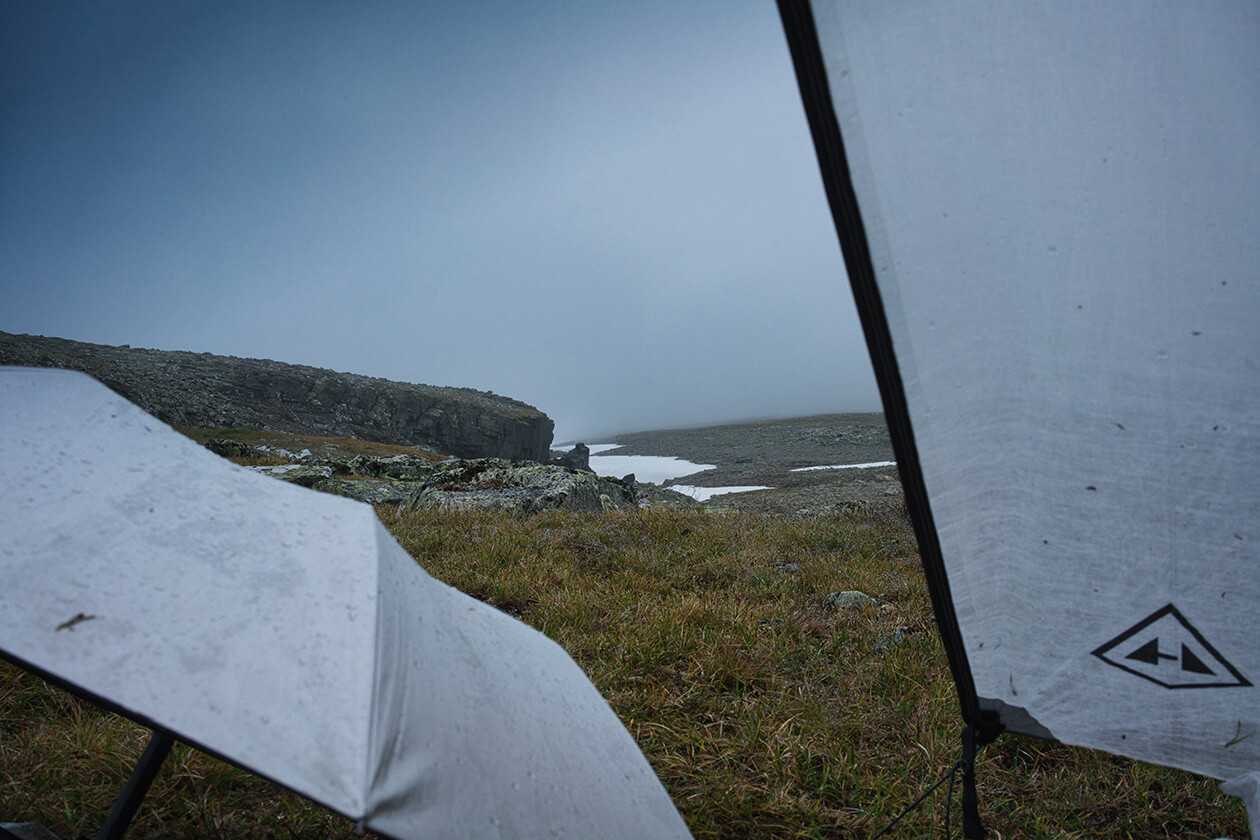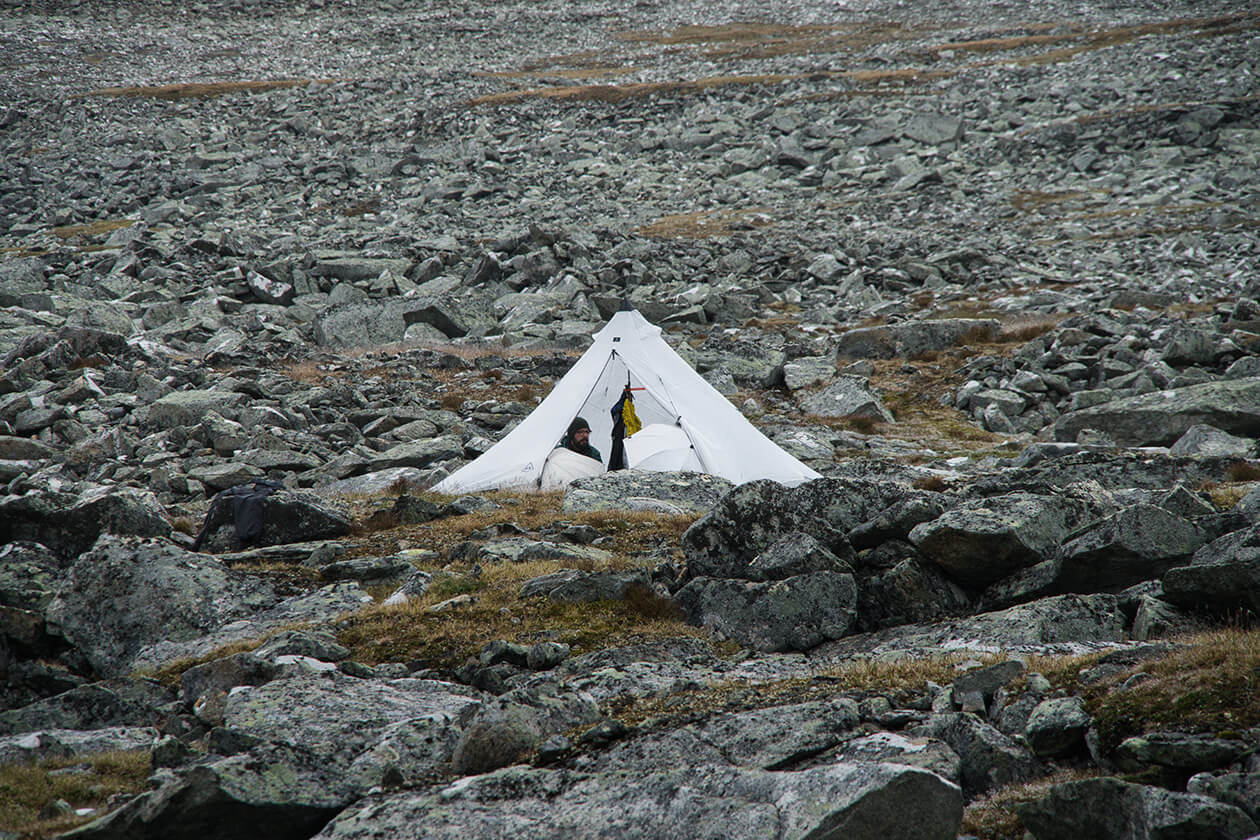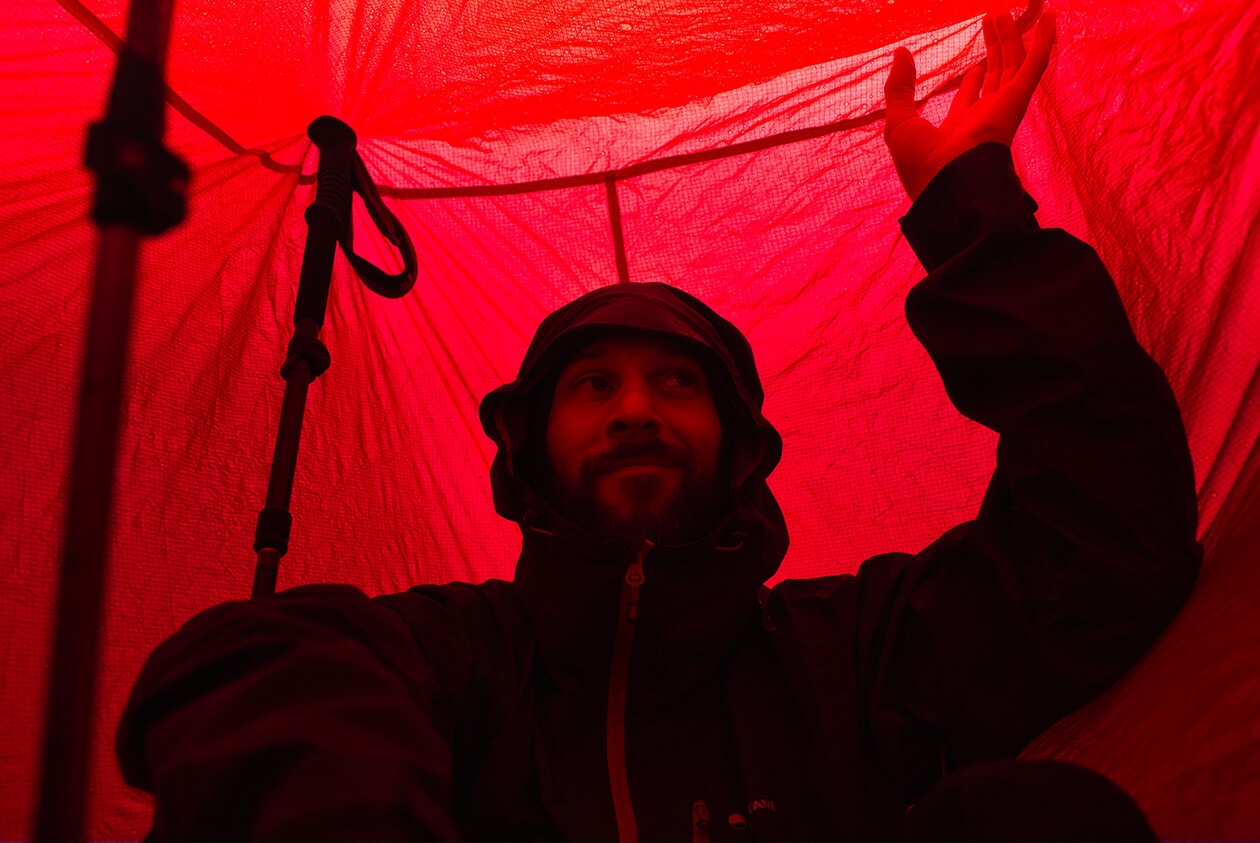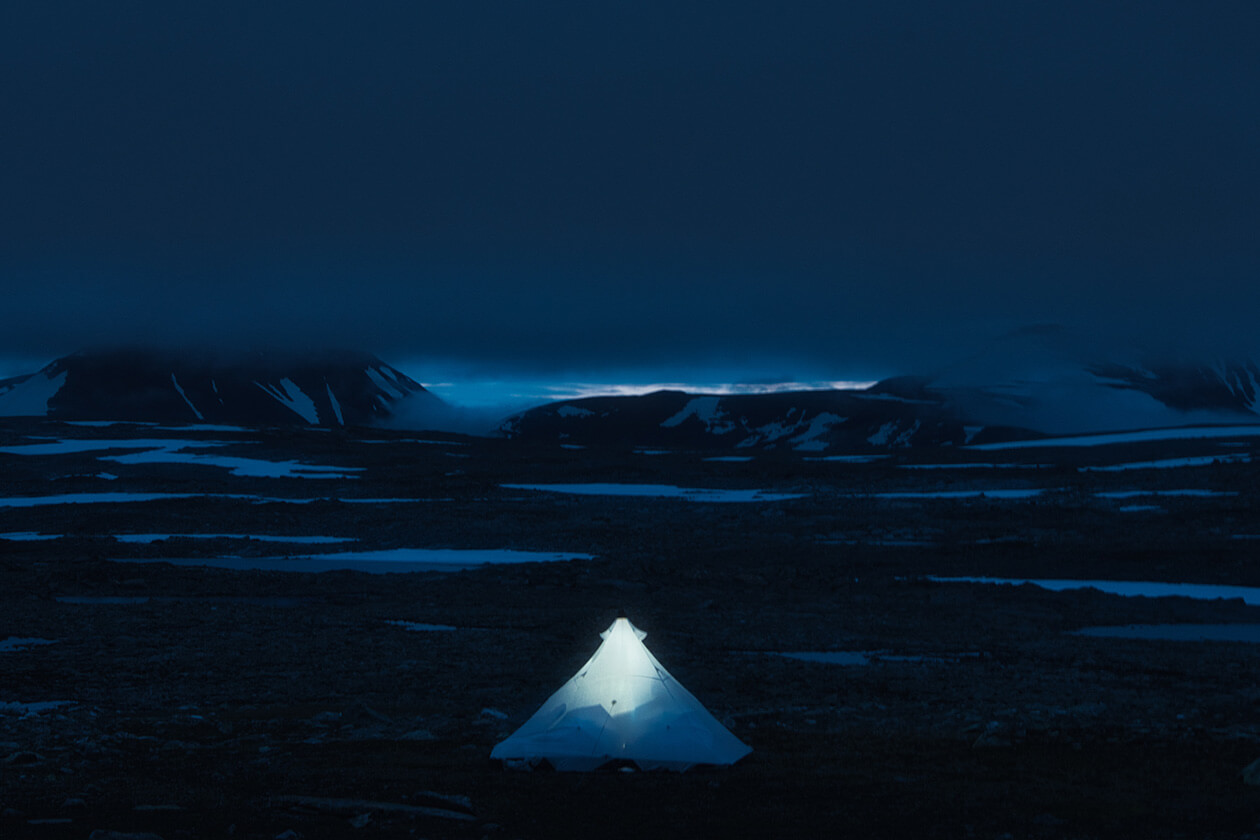
I recommend to invest in a good set of tent pegs as this will make all the difference when the storm hits. I use a combination of MSR® Groundhogs for the main pegs and titanium shepherd hooks for the storm lines. I carry two extra pegs with me in case I lose any but also because I like to use my umbrella as a semi-open door for my tent or tarp and I’ll use the two extra pegs to fix it to the ground so it will not be blown away. That way my umbrella is always ready, waiting for me at the door in case I need to go outside in the rain. That way I won’t have to put on my rain jacket for short outings. In strong winds it often happens that you need to make some quick adjustments or retighten some lines.

I see my umbrella as a part of or extension of my shelter. It’s a great thing to have. I use the silver coated ones because it creates quality, portable shade in areas where there are no trees. When there is rain but no wind, you can fix it between the hip belt and the sternum strap to have your hands free for photography and using your poles in the rain. Often, I don’t need my rain jacket at all because I’ve got the umbrella deployed. It’s also great to use inside the shelter to shield yourself from drafts blowing in under the sides of the tent. Also, I’ve often used it to shield my flame from the wind when cooking. If you’re hiking in a group and everyone has an umbrella you can create a large area of protection during cooking.

Another thing that is great to have in terms of shelter is a bothy bag. A bothy bag is a small dome made of waterproof fabric which can quickly be deployed when you’re in a tight spot. Let’s say you’re hiking up a mountain and as far as you can see the weather looks fine. But as you get to the top you realize that there’s a big raincloud heading your way. You’re exposed and on rocky ground, so you can’t easily pitch your tent. A bothy bag gets its stability from the users sitting in it. It’s a good way to get into a dry space instantly. Perfect for waiting out rainshowers, taking a break, having lunch, switching layers. Bothy bags are made for 2 to up to 16 people. The larger ones usually have one or more small windows so you can see what the weather is like outside. Some also have a fixed point where you can stick your trekking poles into for more headroom. A bothy bag will have waterproof lashes at the side on which you can sit without getting wet.























